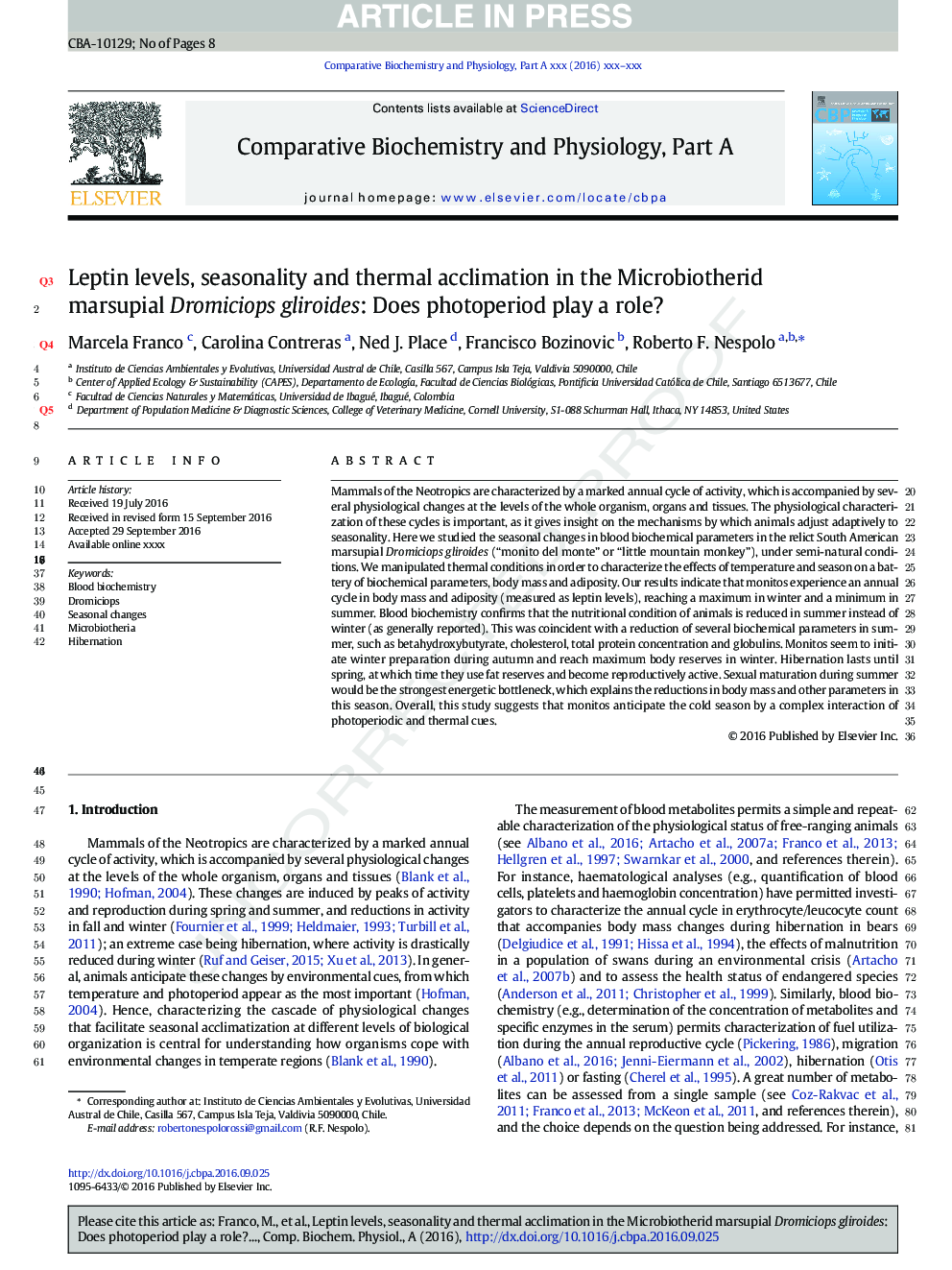| Article ID | Journal | Published Year | Pages | File Type |
|---|---|---|---|---|
| 8318416 | Comparative Biochemistry and Physiology Part A: Molecular & Integrative Physiology | 2017 | 8 Pages |
Abstract
Mammals of the Neotropics are characterized by a marked annual cycle of activity, which is accompanied by several physiological changes at the levels of the whole organism, organs and tissues. The physiological characterization of these cycles is important, as it gives insight on the mechanisms by which animals adjust adaptively to seasonality. Here we studied the seasonal changes in blood biochemical parameters in the relict South American marsupial Dromiciops gliroides (“monito del monte” or “little mountain monkey”), under semi-natural conditions. We manipulated thermal conditions in order to characterize the effects of temperature and season on a battery of biochemical parameters, body mass and adiposity. Our results indicate that monitos experience an annual cycle in body mass and adiposity (measured as leptin levels), reaching a maximum in winter and a minimum in summer. Blood biochemistry confirms that the nutritional condition of animals is reduced in summer instead of winter (as generally reported). This was coincident with a reduction of several biochemical parameters in summer, such as betahydroxybutyrate, cholesterol, total protein concentration and globulins. Monitos seem to initiate winter preparation during autumn and reach maximum body reserves in winter. Hibernation lasts until spring, at which time they use fat reserves and become reproductively active. Sexual maturation during summer would be the strongest energetic bottleneck, which explains the reductions in body mass and other parameters in this season. Overall, this study suggests that monitos anticipate the cold season by a complex interaction of photoperiodic and thermal cues.
Related Topics
Life Sciences
Biochemistry, Genetics and Molecular Biology
Biochemistry
Authors
Marcela Franco, Carolina Contreras, Ned J. Place, Francisco Bozinovic, Roberto F. Nespolo,
